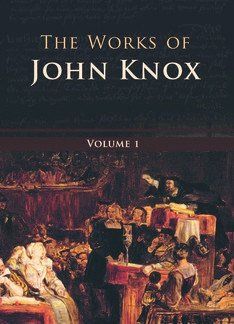‘Few individuals in history have had their names so closely linked to the history of their nation, as John Knox’s name is inextricably linked to his native country. Scotland is still often described as “The land of John Knox”.’
This introductory statement from the inside sleeve reveals the great need to republish the Works of this much maligned Scotsman. It was first published in 1575 and, ever since its last publishing by David Laing in the nineteenth century, Knox has been a man many have had an opinion of without ever reading a word from the Reformer himself. So, this new edition by the Banner of Truth fills a gaping hole.
However, the Banner may well have missed the mark in this republication. Their intention is commendable, as stated on the back sleeve: ‘While these volumes will be invaluable for students, their message deserves a much wider readership’. But, if they desired these Works to have a wide readership, then why did they not update the language?
All six volumes are re-typeset, but the language is still that of the original sixteenth century (for example, see the quotation below). This will be a major stumbling block to readers, even enthusiastic church historians, and hamper the influence Knox might otherwise have on a new generation of interested Christians. This is a shame, for the content brings a wonderful look at the history, theology and piety of a godly man, who, in many respects, is still deeply misunderstood.
Volumes 1-2 give us an interesting (and at times humorous) first-hand account of the Scottish Reformation. Volumes 3-6 contain theological treatises on the Lord’s Prayer (III) and predestination (V), warm devotional letters to friends and family (III-V), sermons (VI), and an exposition of Christ’s wilderness temptation (IV).
In the midst of this lies a hidden gem: ‘A declaration of the true nature and object of prayer’ (III). Here Knox defines true prayer as ‘ane earnest and familiar talking with God, to whome we declair oure miseries, whois support and help we implore and desire in our adversities, and whome we laude and prais for oure benefittis received’ (p.83). He goes on to give an account of a warm, experiential need to pray and deals with the practical struggles we all have in praying to our heavenly Father.
In terms of content, Knox’s Works is a must read. My hope is that many will either put in the effort to find hidden treasure in these Works or the Banner will eventually publish a modern language edition. Those who envision purchasing this edition will nevertheless be well satisfied. Church historians, students and interested parties will salivate as their souls will be fed, minds engaged and hearts stirred for reformation and revival in our own time.






